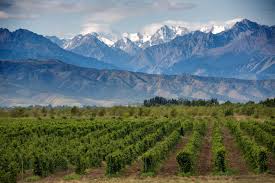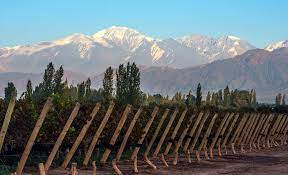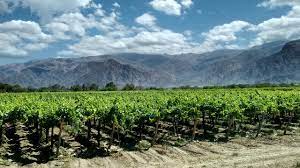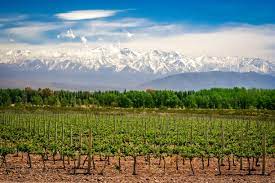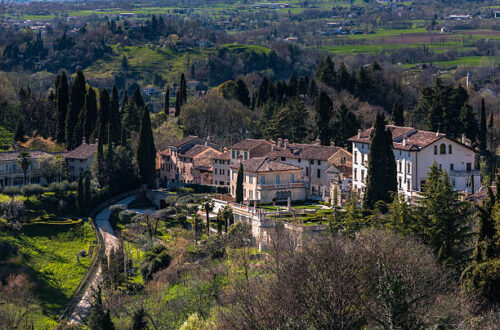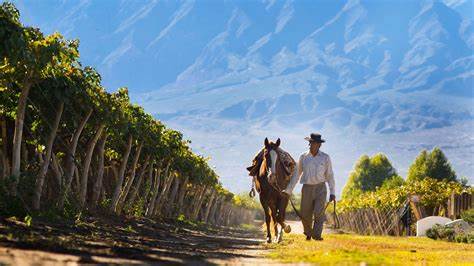
Go Ahead, Venture Out-Try Vino Argentino
“Argentina´s Got Range is an initiative created by Wines of Argentina that seeks to position the huge variety of wines and blends that the South American country offers worldwide.” The goal is to demonstrate that there is a wine for everyone, regardless of your lifestyle or preference. We are delighted to participate in this campaign, to help spread the word about Argentina’s production of diverse, high-quality wines.
When we speak about Argentina having range, range is an interesting and applicable word choice for several reasons. Range can obviously apply to the series of mountains and high altitudes typical in Argentina. Range, by definition, indicates variation, reach, extension. Moreover, in this case, range also refers to the variety and diversity of wines produced in this South American country. Argentina’s Got Range. Literally, figuratively and symbolically. Period. Let’s dig deeper.
Argentina’s Got Range-Mountain Ranges
Despite the fact that Argentina has some 43 mountain ranges, the snow-capped Andes Mountains remain the dominant geographical feature of Argentine wine regions. Most of the wine regions can be located within the foothills of the Andes and the vineyard elevations keep going higher and higher. In Mendoza, there’s the high altitude wine regions of Luján de Cuyo and the Uco Valley, both of which are located in the foothills of the Andes mountains between 850 and 1,520 m (2,800 and 5,000 ft) elevation above sea level. Other parts of the region have an elevation of 10,000 feet. That’s pretty high!!!
The mountain ranges are not just picturesque. They impact the climate and the characteristics of the wine, making the region ideal for grape cultivation. The climate tends to be more continental and as the seasons change and the snow begins to melt and trickle down, the mountain ranges function as an irrigation system sustaining the wine regions at the foothills. The high elevation allows the vineyards to receive more direct sunlight, which leads to grapes with thicker skin, more intense color and stronger tannins. Therefore, the territory’s altitude, the Andes range, the various climates, rainfall and soil determine the quality of the wine. In this case, Argentina’s range is multifunctional and multifaceted!
Argentina’s Got Range-Range, Reach, Variation
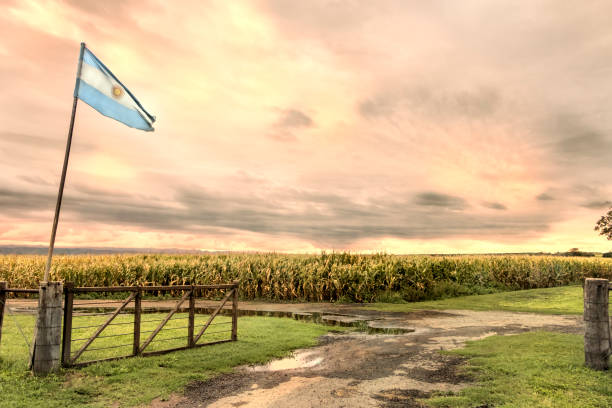
When someone/something has range, he/she/it reaches, extends or varies. The Wines of Argentina do, indeed, have reach, they extend and they vary. Argentina’s terroir is diverse. There is a range of climates, altitudes and soils. Wine production encompasses three regions: Northern (cold temperatures, and the highest ranging region. producing up to 23 degrees in altitude and up to 10,000 feet in altitude), Cuyo, which includes Mendoza (arid, desert region), Patagonia (southernmost region, lower altitudes).
Additionally, many wineries in Argentine wine country are committed to sustainability in terms of reducing the carbon footprint on the environment past, present and future. This is manifested in the amount of water consumption, energy efficiency, waste management and social responsibility. Bodegas de Argentina, an association of Argentine wineries, launched its Wine and Viticulture Sustainability Protocol in 2012, developed in partnership with the Catena Institute of Wine. Bodegas de Argentina is an association of 254 wineries, representing 90% of Argentine wine production. There are over 76 wineries that are Certified Organic, over 60 producers of Organic Grapes and over 6,200 acres of vineyards devoted to biodynamic wines. The organic and biodynamic revolution is definitely expanding in Argentina! This demonstrates range in their endeavors to care for the environment, and their ability adapt to the environment and climate change.
Oh, and did you know that Argentina is the fifth largest producer of wine in the world? Seems like range to me.
Argentina’s Got Range-Range of Wine Styles and Varieties
Moreover, when one thinks of Argentine wine, Malbec or Torrontes usually come to mind. However, it should be known that Argentina’s wine amplitude is immense. In addition to the aforementioned staples, Argentina produces Tempranillo, Cabernet Sauvignon, Pinot Noir, Cabernet Franc, Syrah, Chardonnay, Rosé and Sparkling wines too! The production is 59% red wines, 23% pink and 18% white wines. Then, due to the Italian immigrants, there’s also the Italian varietals like Sangiovese, Barbera, Dolcetto, Freisa, Lambrusco, Nebbiolo and Raboso. What a range of styles, varieties and flavor profiles!
Naturally, during this campaign, we had to try some #VinoArgentino. We tasted two Argentine varieties: a Sparkling wine and a Cabernet Sauvignon. While I have tasted several cabs from Argentina, I have not had many experiences with sparkling wines from the region! Naturally, this was exciting!
Argentine Sparkling Wine

Surprisingly, sparkling wines in Argentina date back to the 19th century. The first commercial sparkling wines in Argentina were bottled in 1902 and have been increasing tremendously. Interestingly, Möet & Chandon has had a foot in Argentina since 1959 and sparkling wine production shows no signs of slowing down.
Argentine producers and winemakers are going beyond Chardonnay and Pinot Noir. In addition, they are also using grape varieties such as Bonarda, Viognier and Syrah to make sparkling wine. The majority of the sparkling wines are produced via the tank method wines, but many producers are now making sparkling wines via the traditional method. There are low temperatures at the foothill of the Andes mountains, with vineyards between 1200-1600 meters above sea level. Today, there are over 130 Argentine wineries that produce sparkling wine, with an annual production of over 42.500,000 liters. That’s called range.
Argentine Cabernet Sauvignon
Cabernet Sauvignon is surprisingly very popular in Argentina. In fact, Cabernet Sauvignon is second to Malbec in terms of production. Aside from being made as a varietal, Cabernet Sauvignon is used as a blending partner with Malbec, Merlot, Syrah and Pinot noir. Interestingly, Cabernet Sauvignon is the third largest variety produced in Argentina. There are three styles of Argentine Cabernet Sauvignons: warm weather cabernet, high altitude/cold climate cabernet and northern cabernet.
Warm weather Cabernets are typically found in Mendoza, which includes Maipú and Luján de Cuyo. The climate is warm and dry, which leads to very ripe grapes with intense style, good body and structure. The vineyards, in alluvial soil, are located between 700-950 meters. High altitude and cold climate Cabernets are found in the Uco Valley. Here, the wines tend to be intense due to higher exposure to the sun and fresh, with natural acidity due to the cooler temperatures. The vines are at 1000-1500 meters in stony soils. This results in intense wines, the product of high sun exposure and a tasty freshness as a result of the cold. Cabernets from the North are produced in the heart of the Calchaquí Valleys, at an altitude of 1750 metres above sea level. Due to the region’s thermal amplitude, the grapes can have high acidic concentration and explosive aromas. Once again…this is called range.
The Wining Hour with #WinesofArgentina:
Yes, #ArgentinasGotRange. Here’s what we sampled:
Bodega Malma Cuvée Reserve Extra Brut Sparkling Wine
This lovely bottle of Argentine bubbles is from the family owned and operated Viola family in Malma. Bodegas Malma is located in San Patricio del Chañar, Neuquén, in the heart of Patagonia. All of their wines are estate grown and bottled.

Patagonia, which is shared by both Argentina and Chile, is South America’s southernmost wine producing region. It is also one of the most favorable regions for wine production due to the climate and terroir. One side features grasslands and deserts, while the other side has glacial fjords and temperate rainforests. There’s also the Andes Mountains and the Pacific Ocean. This range leads to crisp, fresh sparkling wines…like this one.
Malma, means “pride” in the ancient dialect of the Patagonian aborigines. I was proud to taste the fruits of Patagonia! Malma Cuvée Reserve Extra Brut is made from 70% Pinot Noir and 30% Chardonnay. In the glass, these bubbles are an intense yellow with golden flecks. Lovely citrus aromas and toast notes, indicative of the contact with the lees. This wine is fresh, with delicate acidity. Small and persistent perlage. 13% ABV.
Bodega Luigi Bosca Mendoza Cabernet Sauvignon 2018
This Cabernet Sauvignon comes from the Arizu Family Wine Reserve, who have been producing wines for four generations. Bosca’s east facing El Paraiso vineyard in Lujan de Cuyo-Maipo (Mendoza). The vines average 45 years, at an altitude of 780 meters. The soils are well drained and alluvial, being a mix of limestone and silt.

This Argentine wine is 100% Cabernet Sauvignon, harvested manually. Following is destemming and then fermentation in stainless steel tanks. Afterwards, the wine is aged for 14 months in oak. As this is a warm weather Cabernet, it is fresh, chock-full of ripe red and black fruits, chocolate and violet. Full bodied and well structured with a rounded palate. 14.2% ABV
And there you have it. From light bodied to robust, there is a #VinoArgentino for every personality, interest, preference, lifestyle and palate. Experience the magic. Experience the range of #WinesofArgentina.
Literally, figuratively and symbolically, Argentina’s Got Range!
Check out Wines of Argentina for more: https://vinoargentino.winesofargentina.org/
Feel free to also check out my article: Argentina, Making Wine History


